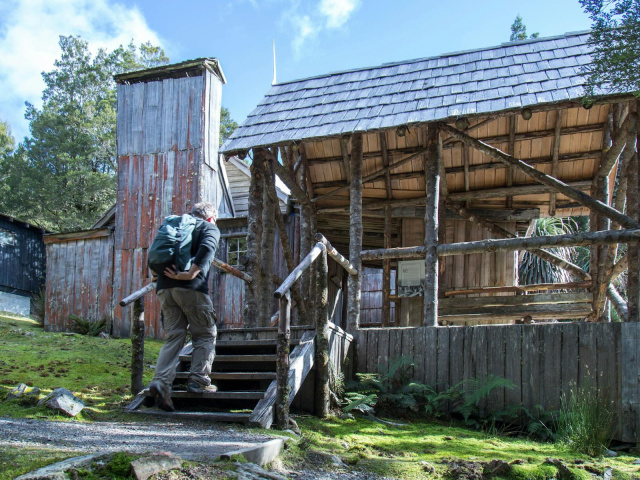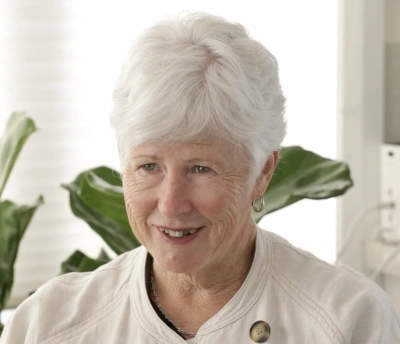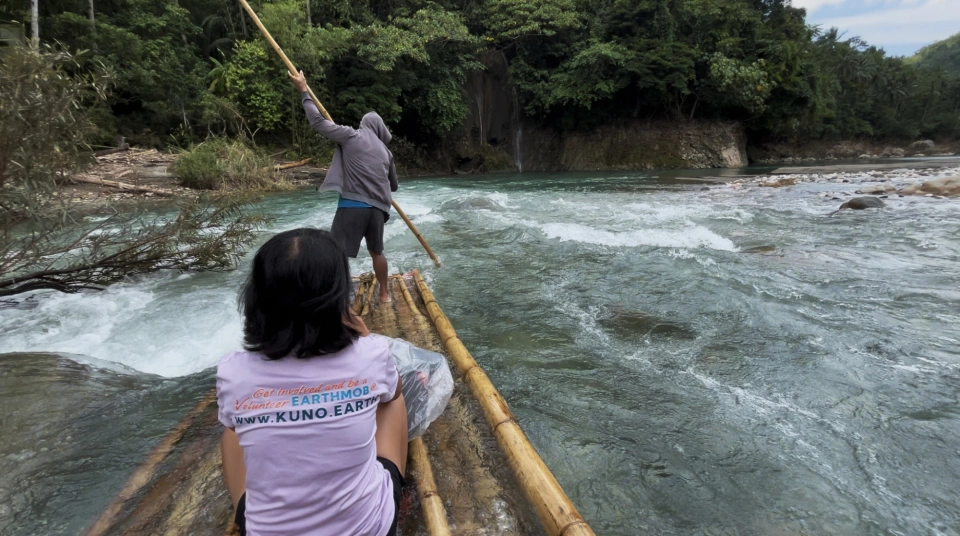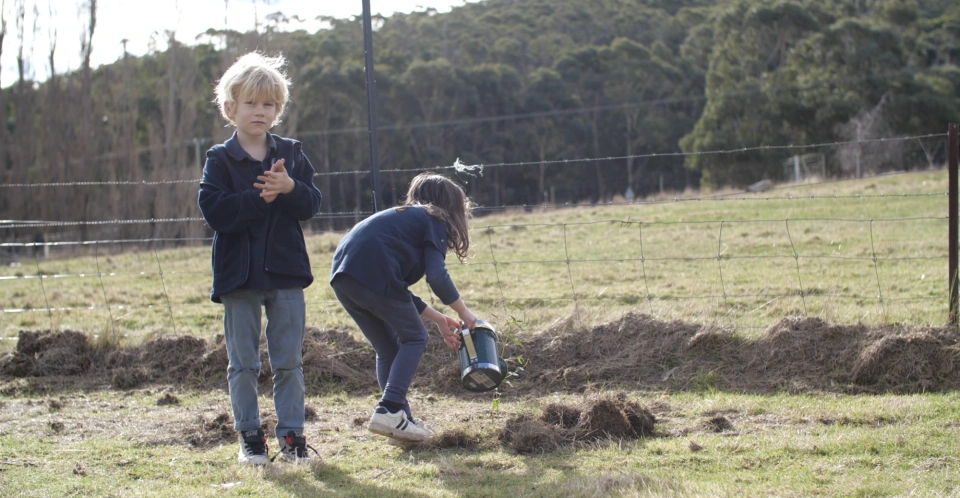Christine Milne’s life for nature: Saving the Waldheim huts with Graham Richardson
Alongside Christine Milne, former leader of the Australian Greens, Graham Richardson also famously intervened to stop the proposed Wesley Vale pulp mill in the late 1980s.
However, few may know about the campaign that preceded the pulp mill, the event that first brought Graham and Christine together. This is the story of how Christine Milne and Graham Richardson joined forces to save the Waldheim huts at Cradle Mountain, told by Christine herself.

Introduced to the wild by the Waldheim huts
My family weren't involved in bushwalking or going away for any sort of recreational pursuits elsewhere, because we were tied to the farm and the dairy herd. So when I got to university, I started to make friends with people whose families did go bushwalking and did have holidays elsewhere.
So suddenly I was very much amongst people talking about this whole idea of the natural world and wild Tasmania, which I was completely unaccustomed to and unaware of.
My only memories of having been into the Highlands in Tasmania in my childhood was when we went on a school trip to look at the hydro dams, to look at how marvellous the hydrodams were, to see how “this is conquering nature”. We were all put on the bus and taken to look at that.
When I got to uni, a group of us started to go to Cradle Mountain to stay in the huts there every year. And so that was really my first introduction of staying in a National Park, in a wild place and starting that whole experience of the natural world, the beauty of the Tasmanian wild.
That was where that was first introduced to me.

Campaign to save the huts
Several years later, in the late 1980s, the Wilderness Society was actually campaigning to remove the huts from the Cradle Mountain National Park, the huts at Waldheim. That was a real clash for me, because that was where I'd learnt to love wilderness. And that's what the Wilderness Society couldn't understand that for a lot of Tasmanians, who had never had any experience of bushwalking or camping in the bush, those huts at Waldheim were the only accessible point for many families to actually engage with the wilderness in any real way.
It was a really uncomfortable position for me to be in because I was a wholehearted supporter of the Wilderness Society and all of their campaigns to stop the logging, to stop the destruction of wilderness. But when the Wilderness Society then came out in a campaign to remove the Waldheim huts from Cradle Mountain National Park, it seemed to me to fly completely in the face of Weindorfer’s call that this be a national park for the people for all time.
And because it was the place where I had learnt to love wilderness, because it was my point of connection with wilderness and I totally understood the perspective of people who hadn't been brought up in that kind of genre in their families, I took it on.
I remember I had quite a few conversations with the Wilderness Society and we agreed to disagree. So I was very prominent in the campaign to save the huts at Waldheim. And so one of the reasons it was being promoted that they would be pulled down was that the toilet facilities were pretty gross. That there was too much leaching into the environment.

Anyway, I ran a big campaign and we got Graham Richardson to come down. He was the federal minister at the time and down he came, and that was my first engagement with Graham Richardson. It was so important because my relationship with him was already established before the Wesley Vale campaign.
So Richo decided that he would allow the huts to stay but that the federal government would invest in a proper toilet block, toilet and shower block at Waldheim. And so I've always thought that they should be the “Milne toilet block of Waldheim”.
That win was also empowering for me because it was the first sort of leadership role I'd taken, as opposed to just turning up to things. And it gave me the confidence that I could do it and win it.
People need a point of entry to loving wild places
Actually, the huts remain much the same to this day. And to this day, they're really enjoyed by a lot of people who come, particularly from the North West coast with their families to enjoy Waldheim.
It's really critically important that you bring people with you. Sometimes compromises have to be made. And in this case, it was a compromise for those who want to remove all human traces from wilderness areas. But what it does is to enable people to own the bigger picture, to own the ideas.
They've got to have a point of entry. People have got to have a point of entry to loving wild places. And if we don't respect that, then we are not going to bring them with us.

Christine Milne
Global nature conservation leader. Officer of the OAM
Alongside Christine Milne, former leader of the Australian Greens, Graham Richardson also famously intervened to stop the proposed Wesley Vale pulp mill in the late 1980s.
However, few may know about the campaign that preceded the pulp mill, the event that first brought Graham and Christine together. This is the story of how Christine Milne and Graham Richardson joined forces to save the Waldheim huts at Cradle Mountain, told by Christine herself.

Introduced to the wild by the Waldheim huts
My family weren't involved in bushwalking or going away for any sort of recreational pursuits elsewhere, because we were tied to the farm and the dairy herd. So when I got to university, I started to make friends with people whose families did go bushwalking and did have holidays elsewhere.
So suddenly I was very much amongst people talking about this whole idea of the natural world and wild Tasmania, which I was completely unaccustomed to and unaware of.
My only memories of having been into the Highlands in Tasmania in my childhood was when we went on a school trip to look at the hydro dams, to look at how marvellous the hydrodams were, to see how “this is conquering nature”. We were all put on the bus and taken to look at that.
When I got to uni, a group of us started to go to Cradle Mountain to stay in the huts there every year. And so that was really my first introduction of staying in a National Park, in a wild place and starting that whole experience of the natural world, the beauty of the Tasmanian wild.
That was where that was first introduced to me.

Campaign to save the huts
Several years later, in the late 1980s, the Wilderness Society was actually campaigning to remove the huts from the Cradle Mountain National Park, the huts at Waldheim. That was a real clash for me, because that was where I'd learnt to love wilderness. And that's what the Wilderness Society couldn't understand that for a lot of Tasmanians, who had never had any experience of bushwalking or camping in the bush, those huts at Waldheim were the only accessible point for many families to actually engage with the wilderness in any real way.
It was a really uncomfortable position for me to be in because I was a wholehearted supporter of the Wilderness Society and all of their campaigns to stop the logging, to stop the destruction of wilderness. But when the Wilderness Society then came out in a campaign to remove the Waldheim huts from Cradle Mountain National Park, it seemed to me to fly completely in the face of Weindorfer’s call that this be a national park for the people for all time.
And because it was the place where I had learnt to love wilderness, because it was my point of connection with wilderness and I totally understood the perspective of people who hadn't been brought up in that kind of genre in their families, I took it on.
I remember I had quite a few conversations with the Wilderness Society and we agreed to disagree. So I was very prominent in the campaign to save the huts at Waldheim. And so one of the reasons it was being promoted that they would be pulled down was that the toilet facilities were pretty gross. That there was too much leaching into the environment.

Anyway, I ran a big campaign and we got Graham Richardson to come down. He was the federal minister at the time and down he came, and that was my first engagement with Graham Richardson. It was so important because my relationship with him was already established before the Wesley Vale campaign.
So Richo decided that he would allow the huts to stay but that the federal government would invest in a proper toilet block, toilet and shower block at Waldheim. And so I've always thought that they should be the “Milne toilet block of Waldheim”.
That win was also empowering for me because it was the first sort of leadership role I'd taken, as opposed to just turning up to things. And it gave me the confidence that I could do it and win it.
People need a point of entry to loving wild places
Actually, the huts remain much the same to this day. And to this day, they're really enjoyed by a lot of people who come, particularly from the North West coast with their families to enjoy Waldheim.
It's really critically important that you bring people with you. Sometimes compromises have to be made. And in this case, it was a compromise for those who want to remove all human traces from wilderness areas. But what it does is to enable people to own the bigger picture, to own the ideas.
They've got to have a point of entry. People have got to have a point of entry to loving wild places. And if we don't respect that, then we are not going to bring them with us.
You might like...

Christine Milne’s life for nature: Connecting with nature through everyday life on the farm

I Moved Here and Found a Deep Connection to Tasmania’s Wild Seas

Streamlining Conservation through Social Action

How do you connect with Nature?
Newsletter
Sign up to keep in touch with articles, updates, events or news from Kuno, your platform for nature
